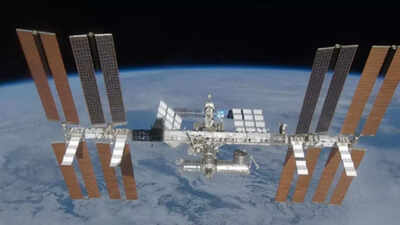ARTICLE AD BOX

For nearly 25 years, the International Space Station has shone as a moving symbol of human achievement and endurance. Since November 2000, NASA and its global partners have sustained an unbroken human presence in low-Earth orbit, marking one of the longest continuous collaborations in space history.
This orbiting laboratory has hosted thousands of experiments, advancing our understanding of science, medicine, and technology.
However, this extraordinary chapter is nearing its end. The ISS, launched in 1998, is now approaching retirement as it reaches the limits of its lifespan. By 2030, it will be safely deorbited, closing a historic era of exploration while paving the way for a new generation of privately operated space stations.
International Space Station prepares for its farewell after 25 years in orbit
Launched in modular sections beginning in 1998, the International Space Station represents one of humanity’s most ambitious collaborations. Built and maintained through cooperation between the United States, Europe, Japan, Canada and Russia, it has been continuously inhabited for a quarter of a century.As reported by NASA Space News, this extraordinary run will soon end. The ISS is set for retirement in 2030, when it will be carefully deorbited and guided into a remote stretch of the Pacific Ocean known as the “spacecraft cemetery.”
For those who have worked on the project, its end will be deeply emotional. One aerospace engineer who spent 17 years with NASA described it as “watching a family member complete their mission.” Over its lifetime, the ISS has supported more than 4,000 experiments in materials science, astronomy, biotechnology, combustion, and Earth observation — producing over 4,400 scientific papers and countless insights that continue to shape both life on Earth and future exploration beyond it.
ISS’s remarkable contribution to science
The International Space Station has revolutionised how scientists understand the effects of microgravity on physical, chemical and biological processes. Researchers have used its laboratories to cultivate artificial retinas, sequence DNA in orbit, refine cancer drug crystallisation, and study the behaviour of lightning from above the clouds.The space environment — defined by low gravity, radiation exposure, and extreme temperature shifts — provides conditions impossible to replicate on Earth.
It has enabled discoveries that influence medicine, materials engineering, and environmental monitoring. In many ways, the ISS has become humanity’s most advanced scientific outpost, blending space exploration with tangible benefits for life below.
Future after the ISS
Although the ISS is nearing retirement, NASA is determined to sustain humanity’s presence in orbit. In 2021, the agency awarded contracts exceeding 400 million US dollars to private companies tasked with building and operating commercial space stations.
These next-generation outposts will serve as research and development hubs in low-Earth orbit, designed to replace the ISS by the end of the decade.This transition builds upon NASA’s growing reliance on private-sector partnerships. Collaborations with SpaceX and Boeing for cargo and crew transport have already proven the value of commercial cooperation. By September 2025, NASA had announced a second phase of funding to support design evaluations and station demonstrations.
The selected companies must demonstrate that their platforms can safely host four astronauts for at least a month.
Can commercial stations uphold human presence in orbit
Once these new commercial space stations meet NASA’s certification standards, the agency will begin purchasing crewed missions and research services aboard them — continuing the model pioneered by ISS supply partnerships.Despite this optimism, timelines remain flexible. The development of reliable, self-sustaining commercial habitats will require years of testing. Meanwhile, China’s Tiangong space station, orbiting 402 kilometres above Earth, continues its operations and may soon surpass the ISS as the site of the longest continuous human presence in space.Also Read | Mount Everest visible from Bihar: NASA astronaut shares breathtaking image of the Himalayas from space

 6 hours ago
3
6 hours ago
3









 English (US) ·
English (US) ·